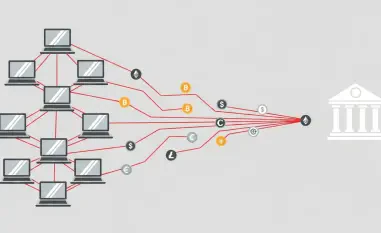In the ever-evolving landscape of cybersecurity, new threats are continually emerging, with the latest involving a sophisticated campaign by a Chinese group identified as Fire Ant. This group has been targeting VMware appliances with precision and stealth. The campaign, in operation since early 2025, showcases an advanced approach to cyber espionage that leverages virtualization infrastructure for initial access and long-term persistence within victim networks. Fire Ant’s tactics highlight significant vulnerabilities in traditional security frameworks, exploiting these to infiltrate systems discreetly. Sygnia researchers have drawn parallels between this group’s activities and techniques used by another Chinese nation-state entity, UNC3886, tracked by Mandiant. Using infrastructure-centric approaches, Fire Ant bypasses conventional endpoint security measures, exposing critical gaps in standard security practices. The sophistication of these cyber-attacks underscores the urgent need for enhanced security strategies capable of countering such modern threats.
Exploiting Virtualization Infrastructure
Central to Fire Ant’s arsenal is the exploitation of VMware’s virtualization infrastructure, which they use to gain unauthorized access and control. Specifically, the assault takes advantage of an out-of-bounds write vulnerability, identified as CVE-2023-34048, located in VMware’s vCenter. This flaw permits remote code execution, enabling attackers to manipulate virtual environments at will. By compromising the hypervisor, Fire Ant can interact directly with guest virtual machines, executing commands, modifying security protocols, and extracting credentials, ensuring total system compromise from the hypervisor down to the guest operating systems. Their deployment of multiple backdoors on VMware ESXi hosts and vCenter assures continued access, even through system reboots. These methods signify a new era in cyber-attacks where virtualization infrastructure vulnerabilities become primary targets for persistent and sophisticated threat actors.
The strategic advantage gained by controlling the hypervisor cannot be understated. When attackers breach this level, they can perform actions usually restricted to administrators, bypassing security checks typically effective against conventional endpoint attacks. This approach, focusing on virtualization infrastructure, allows Fire Ant to maintain a stealthy presence within networks, effectively camouflaging their attacks from existing security measures. These actions highlight the pressing need for organizations utilizing virtualization technologies to implement more robust, adaptive security tactics capable of recognizing and countering hypervisor-level threats. Ignoring such vulnerabilities leaves organizations exposed to severe breaches affecting both data integrity and operational continuity.
Network Infrastructure Vulnerabilities
Fire Ant expands its influence by targeting not only virtualization infrastructure but also essential network components, notably exploiting vulnerabilities in network-defining elements such as F5 load balancers. The group’s manipulation of CVE-2022-1388 within the iControlREST API facilitates unauthorized command execution, enabling seamless deployment of webshells. These tools bridge different network segments, allowing attackers to access network-restricted resources while evading detection. Additionally, Fire Ant tactically reroutes traffic through trusted endpoints, further circumventing security defenses and maintaining a low detection profile. This methodical approach demonstrates a keen understanding of network infrastructures and reflects a deliberate effort to operate unnoticed within compromised environments.
Despite defender efforts to curb Fire Ant’s incursions, the group’s adaptive strategies present formidable challenges. Their ability to re-compromise systems, rotate tools, and vary execution styles showcases remarkable resilience against defensive countermeasures. Moreover, key indicators such as unusual termination of critical processes on ESXi hosts, unauthorized commands, and the presence of outdated EDR agents on virtual machines provide crucial yet often overlooked signs of compromise. Thus, defenders must enhance their detection capabilities and maintain vigilant monitoring, focusing on anomalies in network and virtualization infrastructure activities that may suggest underlying malicious operations. Strengthening defenses against these evolving tactics is crucial for securing critical digital ecosystems.
Implications and Future Considerations
In the continually changing realm of cybersecurity, new threats consistently arise, the most recent being a deft campaign by a Chinese entity known as Fire Ant. This group has been meticulously targeting VMware appliances since early 2025, advancing a sophisticated form of cyber espionage. They exploit virtualization infrastructure to gain initial access and maintain a long-term presence in the networks of their targets. Fire Ant’s operations expose profound vulnerabilities in conventional security frameworks, utilizing these weaknesses to penetrate systems without detection. Sygnia researchers have found similarities between Fire Ant and another Chinese state-sponsored group, UNC3886, which has been monitored by Mandiant. By focusing on infrastructure-centric tactics, Fire Ant effectively circumvents standard endpoint security measures, revealing critical deficiencies in traditional security practices. The intricate nature of their cyber-attacks highlights the pressing need for improved security strategies that can effectively combat these modern and emerging cyber threats.













